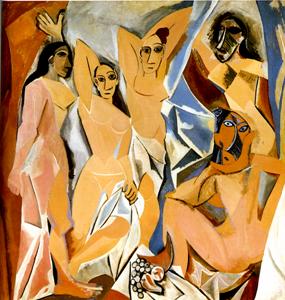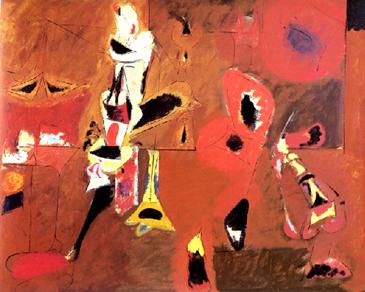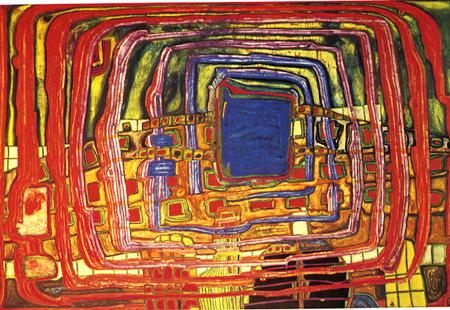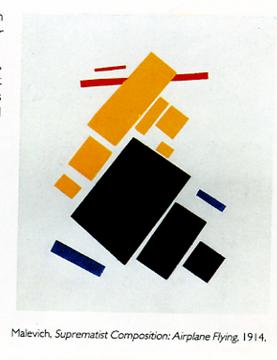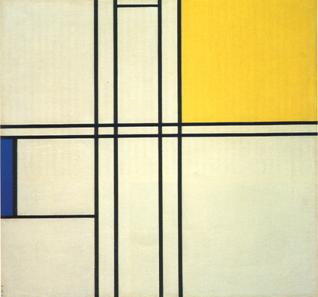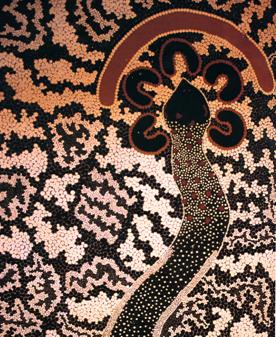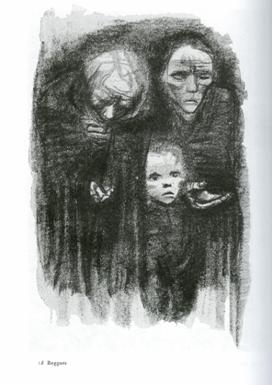| Are There Rules in Art? - Abstraction |
Page 9 of 10
Abstraction.
A radical change in painting occurred in the second part of the 19th century, in reaction to the stale academism of the time. The trend was first toward a more realistic depiction of every day life and of society, but gradually the painting became more abstract, a trend that terminated in a non-representative style (figs. 29-31).
Fig. 36 (Picasso) Fig. 37 (Gorky)
Fig. 38 (Hundertwasser)
Figl 39 (Malevich) Figl 40 (Mondrian)
Fig. 41 (Australian aborigine) Figl 42 (Kollwitz: The Beggars)
The argument between naturalistic and highly stylized painting exists since the beginning of art, with the naturalistic cave paintings in Europe (fig.1) contrasting the abstract designs of the Australian aborigines (fig34). It still continues, and we are, of course, free to stop on the path of abstraction wherever we please. But the organization of the elements in a painting always brings along a degree of abstraction. A child drawing any object or person with his colored pencils will produce without hesitation highly stylized images of the subjects he depicts. He is unaware that the moment he draws a dark line on a light background he has left naturalistic depiction behind. Even an adult beginner may not realize that he is not just copying nature. To be an artist, he must become aware of the autonomy of the work of art. It will be useful to him to know which elements emphasize the objects in the picture, and those that de-emphasize them, pointing towards pictorial abstraction. Among the first are: roundness, strongly oriented illumination, shadows, perspective, insinuation of movement, and the story or ‘content’. Elements that emphasize the painterly aspects include suppression of light and shadow on bodies, avoidance or exaggeration of perspective, broken contours, colors bleeding out of contours or repeating conspicuously, brushstroke and knife marks, omission, repetition, rough finishing, collage, use of materials such as sand to create prominent texture, and presenting the subject, if any, in a non-objective way (e.g., cubism).
|

